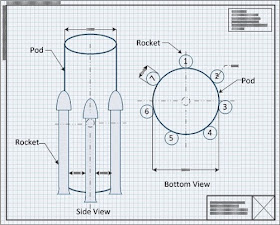Istanbul| Ottomans were the first to walk on the surface of the moon, not Neil Armstrong, said Turkish President Recep Tayyip Erdoğan, yesterday, during an iftar (fast-breaking) dinner hosted by the Turkish Green Crescent. Mr. Erdoğan claimed that Muslim explorers reached the Moon more than 300 years before the beginning of the Appolo program, vowing to build a mosque “in the crater” where they landed.
“It is alleged that the first man to walk on the moon was Neil Armstrong in 1969,” Erdoğan said. “In fact, Muslim space explorers reached our satellite 334 years before that, in 1635. Everyone knows the story of the famous aviator, Lagâri Hasan Çelebi, the “Ottoman Rocket Man”, who made the first successful manned rocket flight in 1633. What you might not know, is that he attempted to reach the moon, two years later, and could very well have succeeded!”
The story of Lagari Hasan Çelebi was purported by a famous 17th century Arab merchant and traveller, Mehmed Zilli, also known as Evliya Çelebi. In his famous travelog, he explains that Lagari Hasan Çelebi launched in a 7-winged rocket using 50 okka (63.5 kg or 140 lbs) of gunpowder. It took off from Sarayburnu, a site below the Topkapı Palace in Istanbul.
As Evliya Celebi wrote, Lagari proclaimed before launch “O my sultan! Be blessed, I am going to talk to Jesus!”, before lighting the rocket’s gunpowder. He then ascended more than 200 meters in the air and landed in the sea, hundreds of meters from his takeoff point. Swimming ashore, he allegedly reported: “O my sultan! Jesus sends his regards to you!”.
(This 17th-century engraving depicts one of Lagâri Hasan Çelebi’s famous rocket flights, but it’s unclear if it represents his first flight or his attempt to reach the moon, in 1635.)
President Erdoğan’s surprising claim generated some whispers and laughter from the audience, a reaction that clearly angered the Turkish politician. He slammed the skeptics for mocking his claims, adding that he would soon have the proofs to back his claims.
“Why do you not believe it? Because you’ve never believed that a Muslim can do such a thing, just like you’ve never believed that our ancestors could manage to launch ships in the Golden Horn after transporting them across land,” Erdoğan said, referring to Ottoman Sultan Mehmet II’s conquest of Istanbul in 1453.
“This claim is not new. A number of academics in Turkey and in the rest of the world have made this claim, and I believe they are right. NASA may have destroyed most of the physical evidence of the Ottoman’s success during the Apollo 11 mission, but we’ll try to find any evidence that might have escaped the cover up.” The Turkish President did not, however, give any precision about the proofs he was expecting to find nor how he was hoping to gather them.
The description of the flying engine used by Lagâri Hasan Çelebi is pretty vague and doesn’t really allow modern scientists to accurately recreate the design. This sketch shows the basic design as it is described, but is almost certainly incomplete or partially inaccurate. The story of Lagâri Hasan Çelebi is considered a legend by most historians, and most experts believe that it is impossible that the “aviator” could have survived a flight into outer space.
His first flight was, indeed, addressed in an experiment by the television show MythBusters, on November 11, 2009, in the episode “Crash and Burn”. The rocket constructed for the TV show did not adhere closely, however, to Evliya Çelebi’s descriptions and the final design did not attempt to utilize materials of the period;
The team noted that Evliya Çelebi had
not sufficiently specified the alleged design used by Lagâri Hasan, but
concluded that it would have been “extremely difficult” for a 17th-century
figure, without access to modern steel alloys and welding techniques, to land
safely or even achieve thrust at all. This conclusion was backed by the fact
that, although the re-imagined rocket rose, it exploded in midflight.


